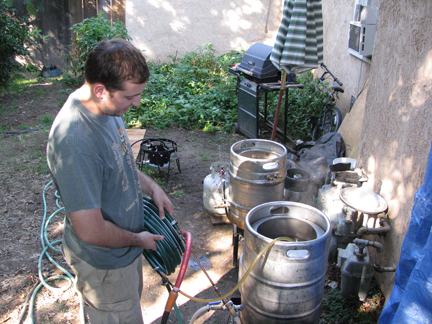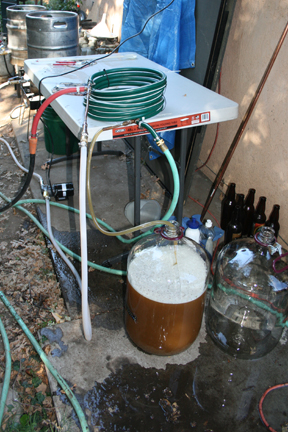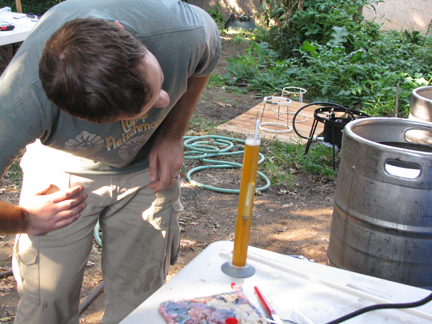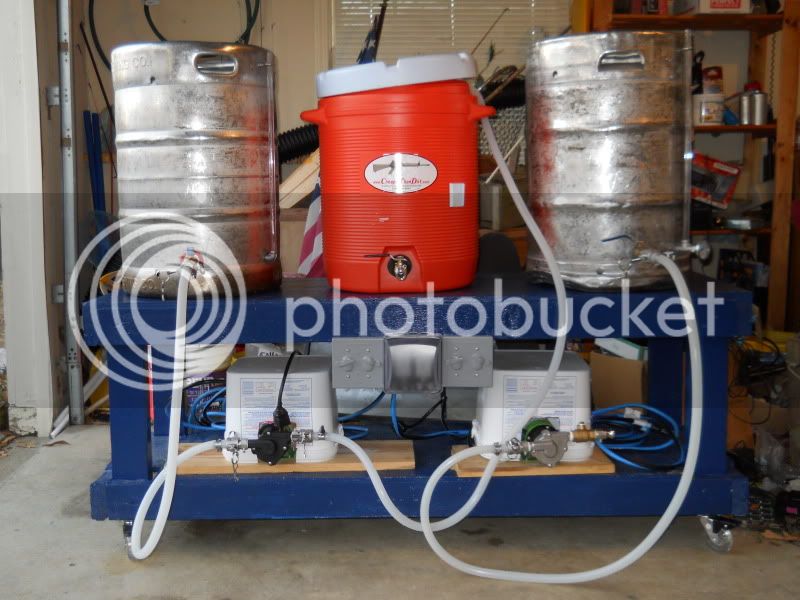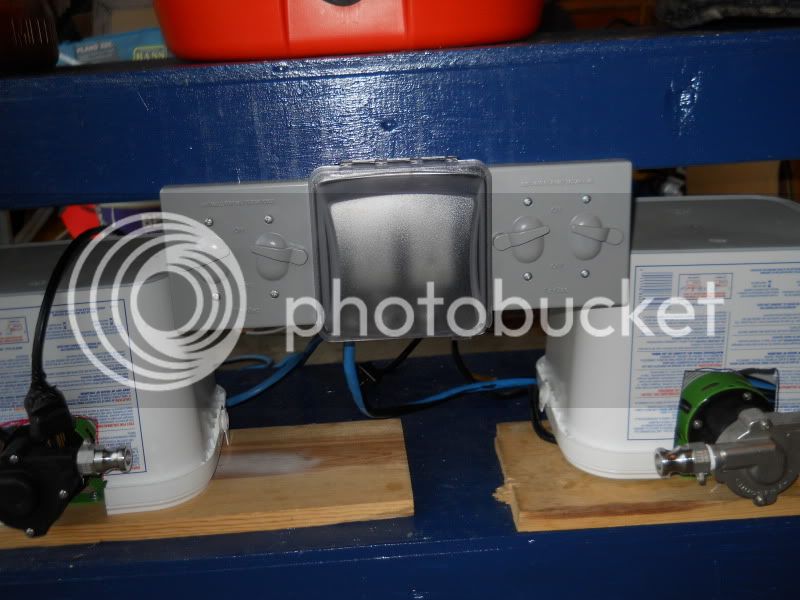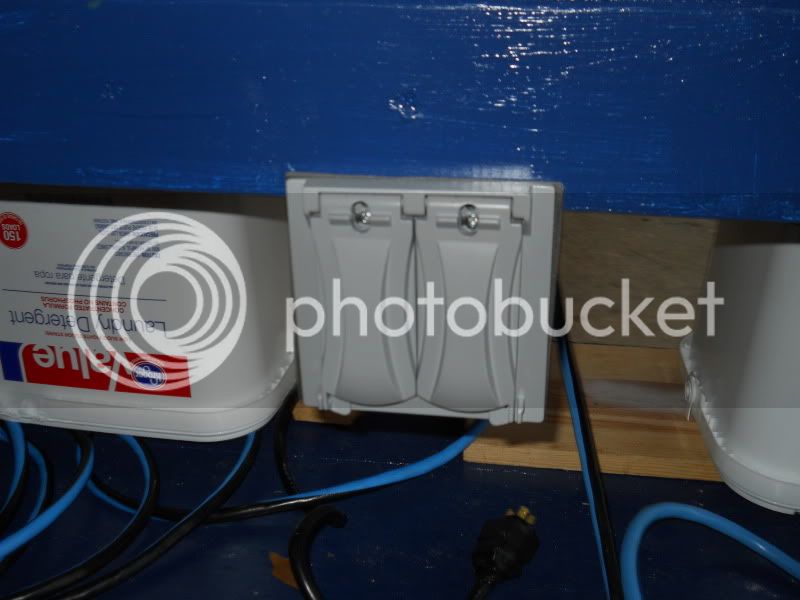I've been lurking around on HBT a lot lately, I had sort of an idea in my head about what I wanted, but cruising threads on here really helped me get things sorted out. As of a few months ago I was doing 5 gallon batches in a turkey fryer. This latest round of upgrades is the culmination (for now) of my upgrade to a 10 gallon system. Big thanks to edwort and others in the many threads on quick-disconnects, and thanks to its02003 for the sight glass.
The first big part of my new setup was the HLT. I've been using a turkey fryer pot for heating sparge water, but at only 7 1/2 gallons it was causing trouble on 10 gallon batches. I wouldn't have enough to mash out and sparge in one go, so I'd have to either heat more water (resulting in a longer mash and dryer than intended beer) or sparge with water that wasn't up to temp (causing efficiency to suffer).
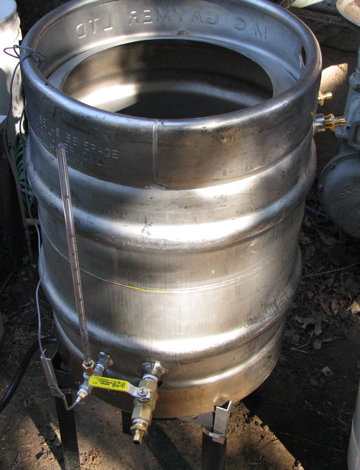
I picked up a 13 gallon imperial keg from the brewshop with the intentions of turning it into my HLT. At first I fooled around with weldless fittings, but they kept giving me trouble. I took the imperial keg and my existing keggle to Alan to get them all welded up. The HLT has a 1/2 fitting for the ball valve, and a second fitting welded in for my sight glass and thermometer probe. The sight glass is marked off in 1/2 gallon increments and was really helpful.
As a part of all these upgrades I purchased a march pump. Since I knew I would be swapping connections back and forth, I purchased some brass quick disconnects.
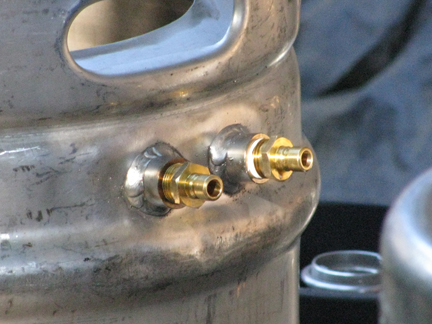
Here's a shot from the top of the HLT. You can see the thermometer clipped to the side, which is something I need to work on. The clip doesn't hold on that well, and I knocked the thermometer into the (full) HLT twice while brewing. The top number is the actual water temperature, and the bottom number allows you to set an alarm. When I tested it, the digital was within 1 degree of my old thermometer, so I think the calibration's pretty spot on. The other bit you can see slightly out of focus back there is a copper coil for recirculation. I can pump wort out of my mash tun, through the coil, and back into the top of the mash tun. Because the coil is immersed in water, I can control the temp of the water to control the temp of the mash. In this case, it worked great. I missed the mash temperature by 3-4 degrees, and the big grain bill on my IPA left me with less than an inch of space to the top of the cooler. I just heated the HLT to about 160 and recirculated with the pump at full flow. The outflow from the coil was about 152 at first, and as most of the mash came up to temperature that raised a little. After giving everything a good stir, I was right at 151-2.
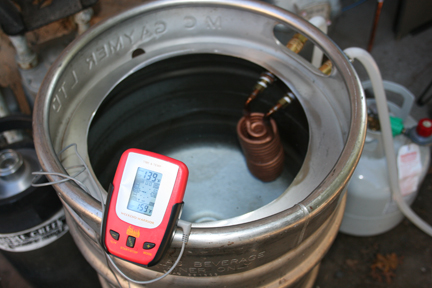
Here's a shot of things hooked up before the brew started. In this one, I'm pumping hot water with PBW out of the HLT, through the heat exchanger, and then into a bucket. This helped get the pump and all the lines clear, and also got all kinds of nasty oxidation out of the copper coil.
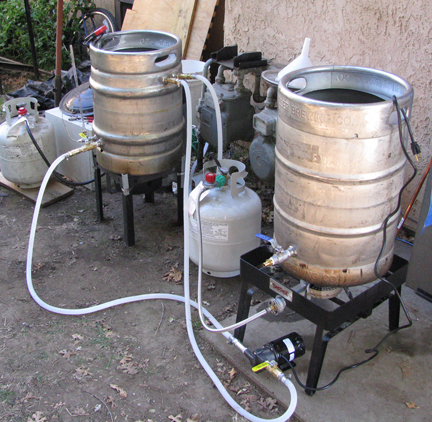
The first big part of my new setup was the HLT. I've been using a turkey fryer pot for heating sparge water, but at only 7 1/2 gallons it was causing trouble on 10 gallon batches. I wouldn't have enough to mash out and sparge in one go, so I'd have to either heat more water (resulting in a longer mash and dryer than intended beer) or sparge with water that wasn't up to temp (causing efficiency to suffer).

I picked up a 13 gallon imperial keg from the brewshop with the intentions of turning it into my HLT. At first I fooled around with weldless fittings, but they kept giving me trouble. I took the imperial keg and my existing keggle to Alan to get them all welded up. The HLT has a 1/2 fitting for the ball valve, and a second fitting welded in for my sight glass and thermometer probe. The sight glass is marked off in 1/2 gallon increments and was really helpful.
As a part of all these upgrades I purchased a march pump. Since I knew I would be swapping connections back and forth, I purchased some brass quick disconnects.

Here's a shot from the top of the HLT. You can see the thermometer clipped to the side, which is something I need to work on. The clip doesn't hold on that well, and I knocked the thermometer into the (full) HLT twice while brewing. The top number is the actual water temperature, and the bottom number allows you to set an alarm. When I tested it, the digital was within 1 degree of my old thermometer, so I think the calibration's pretty spot on. The other bit you can see slightly out of focus back there is a copper coil for recirculation. I can pump wort out of my mash tun, through the coil, and back into the top of the mash tun. Because the coil is immersed in water, I can control the temp of the water to control the temp of the mash. In this case, it worked great. I missed the mash temperature by 3-4 degrees, and the big grain bill on my IPA left me with less than an inch of space to the top of the cooler. I just heated the HLT to about 160 and recirculated with the pump at full flow. The outflow from the coil was about 152 at first, and as most of the mash came up to temperature that raised a little. After giving everything a good stir, I was right at 151-2.

Here's a shot of things hooked up before the brew started. In this one, I'm pumping hot water with PBW out of the HLT, through the heat exchanger, and then into a bucket. This helped get the pump and all the lines clear, and also got all kinds of nasty oxidation out of the copper coil.



